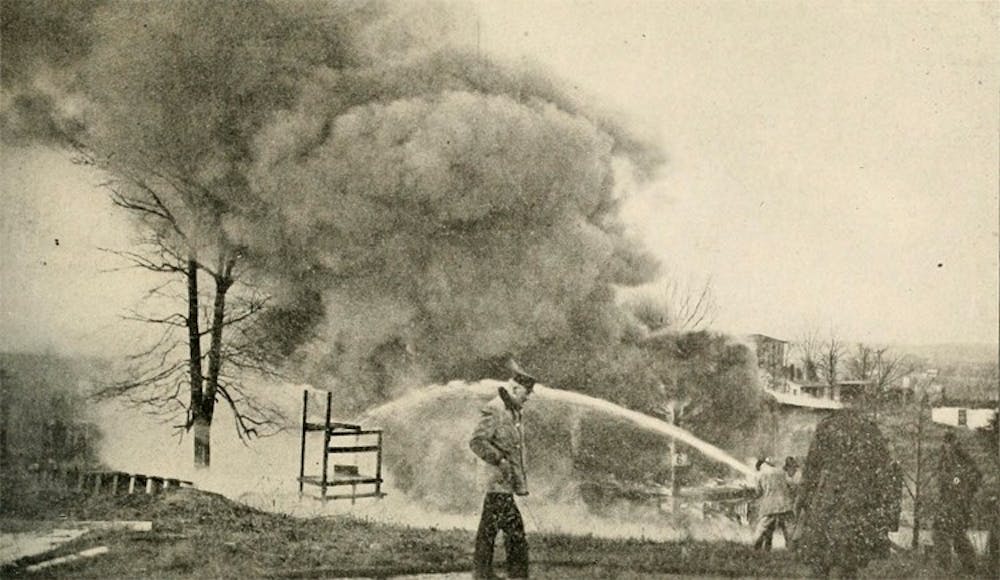This story is the fourth in a series investigating World War I-era chemical weapons and equipment buried under AU’s campus and in the Spring Valley neighborhood.
By the time the Army finished its World War I chemical warfare testing at AU, the South side of campus had become known as “No Man’s Land.”
In 1919, as part of the soldiers’ training, they set up projectiles in a pit in a forested area behind what is now the intramural soccer field.
View American at War: Munition Testing Grounds in a larger map
“No Man’s Land” was peppered with debris and deep gashes left in the ground by the Army’s exploding projectiles — many of which were abandoned there after the tests were complete.
These projectiles were tested on animals. George Temple, head engineer of AU’s motor maintenance department during the war, observed the Army’s training as he worked on campus. Temple volunteered several times for chemical experiments that left his skin blistered and scarred.
Temple told The Eagle in 1965 that hundreds of stray dogs were rounded up in the streets of Washington, D.C. and brought back to AU to be test subjects.
One of the buildings constructed at Camp AU was a dog hospital, which monitored dogs, goats and other animals injured by war gas experiments.
In one test, projectiles were filled with cyanogen chloride, a toxic gas that can cause paralysis, loss of consciousness and death.
A December 1918 report from a division of Camp AU’s chemical warfare researchers, the “Pyrotechnic Section,” recorded the experiment’s gruesome results.
“The five goats and two dogs placed to the left of the projectile, together with the two goats nearest to the Livens [projectile] on the right, were killed,” the report said. “The next two goats to the right of the projectile gave light casualties.”
Eventually, World War I ended and the U.S. government no longer needed to house soldiers at AU. As the men packed up and moved out, the Army was left with the task of cleaning up the campus.
Today, chemical waste is usually contained and sealed in safe containers. But in the early 1900s, chemicals were thrown away like regular trash. To get rid of the toxic waste and hundreds of projectiles on campus, the Army buried them.
The Courier, AU’s campus newspaper, hoped they would never see the light of day.
“The munitions were taken back to the limit of the University acres and there buried in a pit that was digged [sic] for them. Would that it were as deep as the cellar of [underworld gods] Pluto and Proserpine,” The Courier wrote.
AU resumed its usual academic schedule after the war and as time passed, the trees in “No Man’s Land” were cleared for new homes and businesses. Glenbrook Road, Sedgwick Street, Rockwood Parkway and other roads were paved near the Army’s old testing grounds and chemical burial pits.
Decades later, the new Spring Valley community started to find rusted shells, chemical munitions, construction tools and cracked glass lab equipment near AU’s campus.
See the fifth part of this series in The Eagle’s April 5 issue.
news@theeagleonline.com





